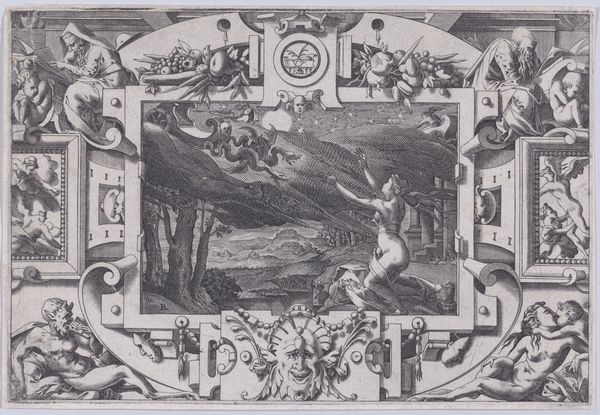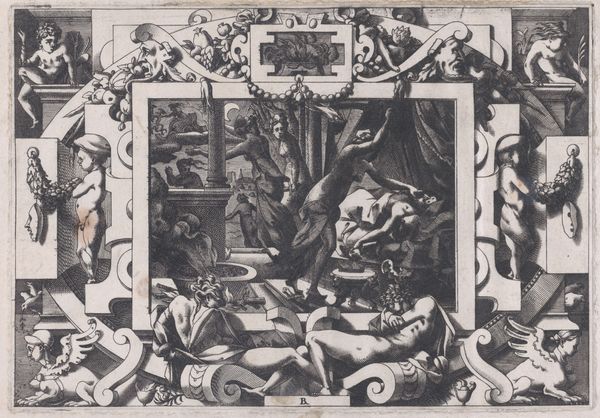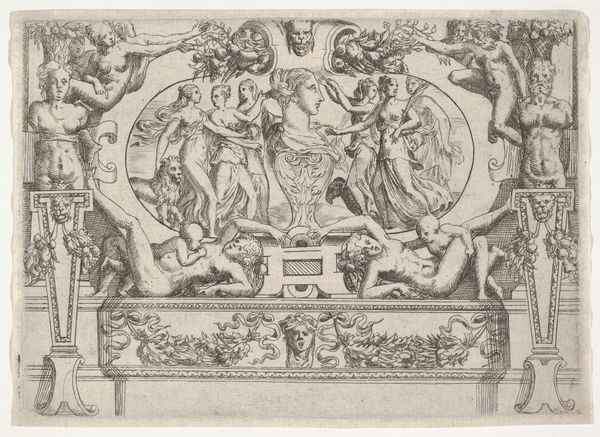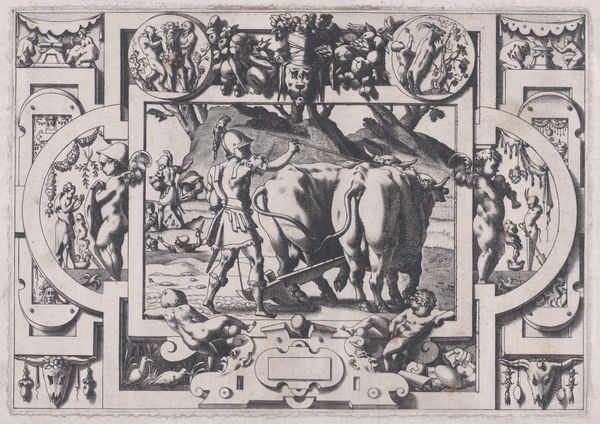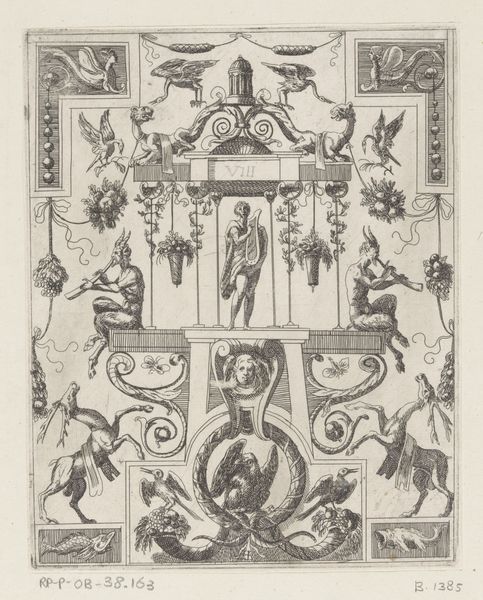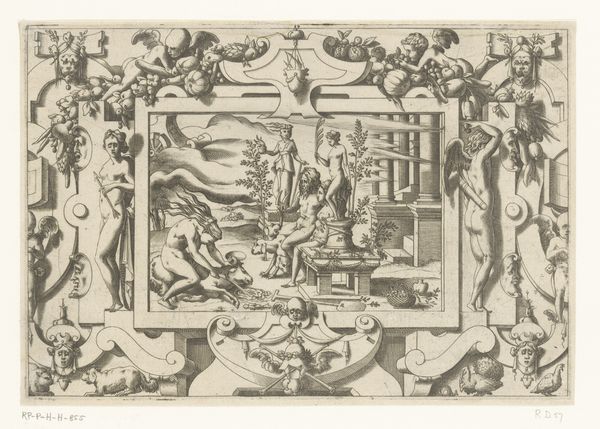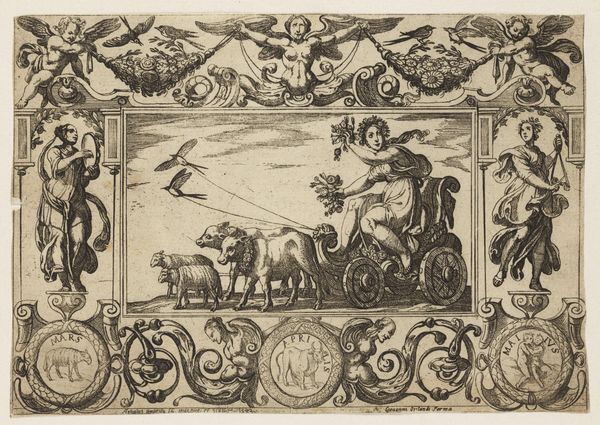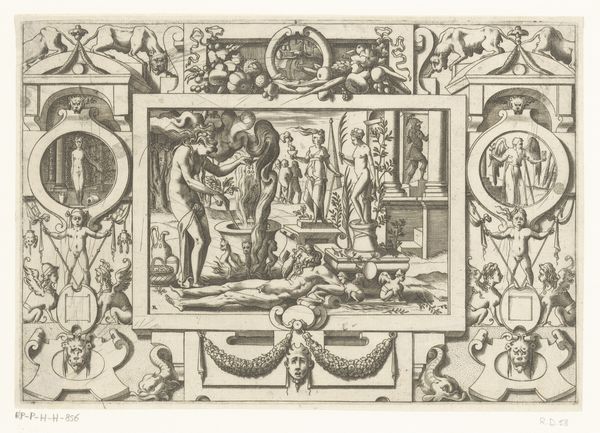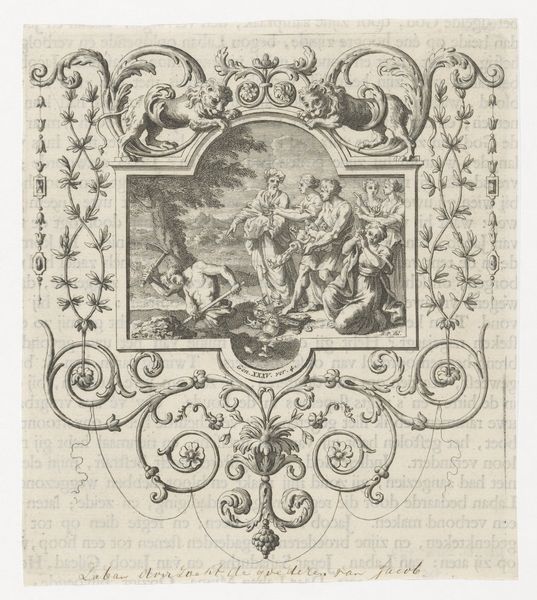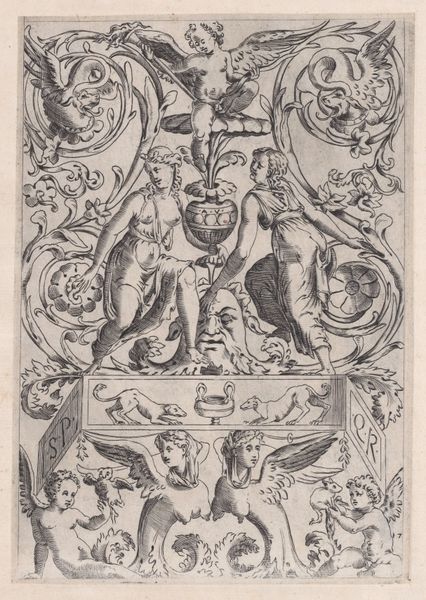
Medea Flees from Jason (L'épée au poing court Jason la poursuivre mais ne peut celle en vitesse aconsuivre...), from "Jason and the Golden Fleece" 1563
0:00
0:00
drawing, print, engraving
#
drawing
#
allegory
#
narrative-art
# print
#
mannerism
#
figuration
#
history-painting
#
engraving
Dimensions: Sheet: 6 1/4 × 9 3/16 in. (15.9 × 23.4 cm)
Copyright: Public Domain
Editor: Here we have René Boyvin's engraving, "Medea Flees from Jason" made in 1563. It’s such a dramatically busy scene, this frenzy of action framed by…well, by more frenzy! It feels so crammed, so *urgent.* I’m curious, what's the most striking aspect of this piece to you? Curator: You’ve nailed the frenetic energy. It’s almost claustrophobic, isn't it? For me, it’s the ornate frame *competing* with the central scene. Boyvin wasn’t just illustrating a myth; he was showcasing his skill, packing in as much detail, knowledge and visual reference as possible, playing with the contrast. Look how he positions Medea high above a subdued, muted landscape…like a scene in an epic play! Tell me, how does that intense contrast hit *you*? Editor: It really emphasizes her power, and almost weaponizes it, but makes the flight look performative, too. The figures and ornamentation seem so rooted in the Classical tradition but tweaked into this heightened emotionality. It seems quite stylized, in a way that both evokes but also goes beyond history-painting, right? Curator: Precisely! This controlled theatricality signals Mannerism. Remember, artists at this time felt this pressure to outdo even the Ancient Greeks and Romans. You can really feel how personal and expressive it feels through this engraving. Considering the themes, what else grabs your attention in it? Editor: Maybe that feeling of almost stylized and ornate *tension*. It's something in between showing control, as a visual representation and allegory, and making everything *raw*. Thanks so much for pointing that out. I'm walking away with a newfound appreciation for Mannerism and how a scene like this becomes performative on the part of both artist and protagonist!
Comments
No comments
Be the first to comment and join the conversation on the ultimate creative platform.
